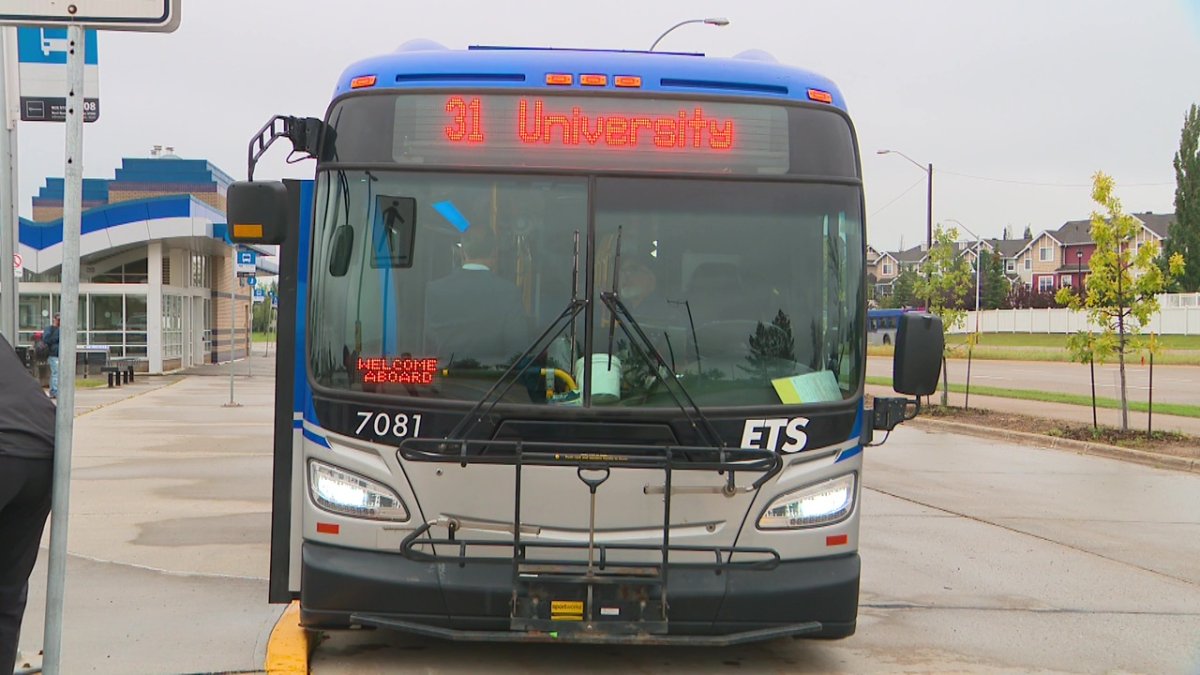Edmonton city councillors have taken a look at ways to increase transit funding to improve the frequency and quality of the service.

Ward Métis Coun. Ashley Salvador said she hears from many constituents that the Edmonton Transit Service (ETS) does not feel convenient, reliable, safe or viable.
“The main takeaway for me is that we’ve chronically underfunded transit for decades and if we want to deliver the service that Edmontonians expect, we need to look at a more sustainable funding model,” Salvador said.
Service hours have not changed in about a decade while the city population has increased, meaning there has been a decrease in service hours per Edmonton resident, according to the city.

ETS is about 260,000 annual service hours short of meeting the city’s transit service standards, according to the city.
Salvador said the city’s goal is to have Edmontonians take 50 per cent of all trips by transit or active transportation. The city has moved further away from that goal in the last decade.
According to federal census data, 20 per cent of Edmontonians used transit or active transportation to get to work in 2016. That number decreased to 12 per cent in the 2021 census.
“On our end, we need to be ensuring that public and active modes are viable choices,” Salvador said. “Making the appropriate investments to ensure that active and public transit are safe, viable convenience is really critical to achieving those goals.”
A report presented two scenarios for the next decade of transit funding: for service hours per capita to stay the same or increase. Either way, transit funding will need to increase annually to account for inflation and population growth.
To keep transit service levels stable, the city would need $70 million total over the next 10 years in operating budgets and $180 million in capital budget.
To increase service hours per capita, the city would need $174 million total over 10 years in operating budgets and nearly $700 million in capital funding.

City staff explored multiple options for long-term transit funding, including using parking fees, a motor fuel tax, tolls or increasing taxes for property owners near LRT stations.
However, the best and most realistic option was to use a dedicated transit levy, the city said. A one per cent annual tax increase could generate almost $250 million in annual ongoing funding, according to the city’s projections.
Both scenarios include a fare increase of two per cent per year from 2027 to 2033, but the city said the increase might need to be even more to address funding shortfalls.
The city said increasing fares only helps raise revenue to a point, because some customers would be priced out of the service or choose to use a different form of transportation.
Last month, city council approved a new funding formula for the Edmonton Police Service (EPS). The formula takes into account inflation and population growth so that the police can have a consistent and reliable source of funding that increases every year.
Salvador questioned why transit couldn’t be funded in the same way.
“EPS is our biggest line item (in the budget) and transit is actually our second biggest line item, so I think it’s fair to have a conversation around what that could look like,” she said.
Salvador moved a motion to fund the second scenario and grow transit service hours per capita, and a report with options on how to do that is set to come back to executive committee in the spring.




Comments